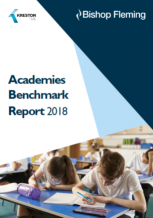With more than 200 members in our Academy team, we've got the capacity and expertise to meet your needs.
Academy trustee, governor, or member? Know your role
5th December 2018
It is important to understand your role as an academy trustee, governor or member.
As volunteers in today’s educational landscape, life is tough.
There is increasing definition and regulation of what is expected of you, within the very responsible position held in governance arrangements.
Accountability is high, and it really does make a significant difference to how a person performs, if we understand the purpose of a particular role, how that fits within the academy or multi academy trust and the line of responsibility.
Understanding your role
The key to being effective and making best use of your valuable time, is to understand what your particular role requires, what it means and what part you play within the bigger picture.
As the role of governance continues to be an increasing focus for potential praise or criticism, the need for clarity has never been more important.
A robust induction process for new trustees is crucial, so they can play an active role swiftly.
The term “trustee” and “director” are formal terms and interchangeable, however they do add emphasis to the legal, statutory and contractual requirements of the role within today’s governance.
An academy trust is a charitable company limited by guarantee and this means that trustees are bound by both charity and company law.
Does your trust have a clear and consistent term to refer to the board (governing body) and the individuals upon it?
Competency framework
The Competency framework for governance sets out the knowledge, skills and behaviours needed for effective governance and for building an effective team, including the need for everyone to understand why they have been recruited and what role they play in the governance structure.
It is important to have clear definitions for those who sit on the board (the directors/trustees), those who appoint the board (the members) and those at local governance level who monitor and deliver the decisions of the board, at a local level.
Members
At the top, the members have a minimal role by comparison to the trustees and are “eyes on, hands off”, meeting perhaps just once a year to ensure the success of the trust.
They do not tell the trustees how to run the trust, attend meetings or have voting rights at board meetings. The members do not have legal responsibility for academy trust business, yet are the first signatories to the trust and are often compared to the shareholder of a company limited by shares.
They are not the decision makers, but in effect the “guardians” of the governance of the trust.
Trustees
The trustees, also company directors, are the individuals with legal obligations as both charity trustees and corporate directors.
They are also required to ensure compliance with the requirements of the Educational Standards Funding Agency (ESFA), ensure the academy reports on what it has achieved and that it remains true to its charitable purpose.
The trustees are responsible for the strategic direction and performance of the trust, compliance and good governance.
To achieve trust business effectively, the trustees need clear role descriptions for the particular governance structure adopted (i.e. committees, portfolios etc) to avoid unclear and overlapping responsibilities that can hamper effective governance.
Contact us
If you would like support with role definition, terms of reference and structure review, please contact me at stimmins@bishopfleming.co.uk or 01803 291100






